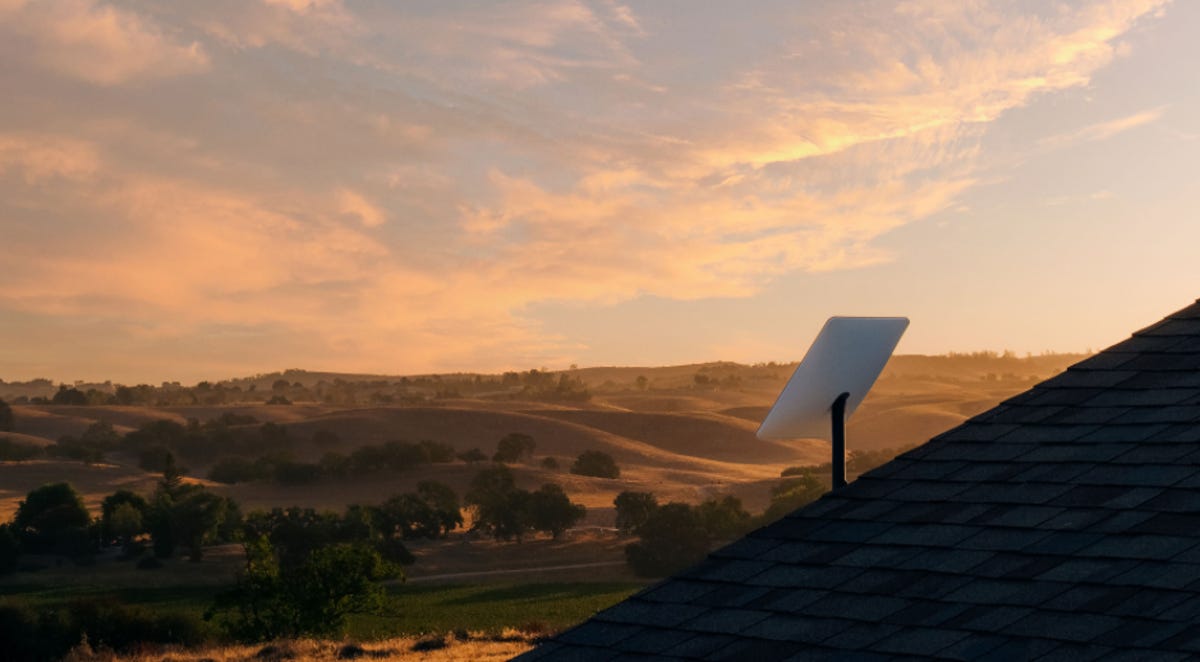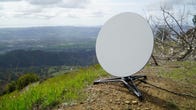[ad_1]
当您想到亿万富翁企业家埃隆马斯克时,您很可能会想到他的 电动汽车公司,特斯拉, 太空探索企业 SpaceX 或者他多事的 购买推特. 也许你知道他是 地球上最富有的人之一.
你可能不太熟悉 Starlink,这是马斯克的一项冒险,旨在通过在头顶运行的越来越多的私人卫星网络向地球上几乎任何人出售互联网连接。
经过 SpaceX 多年的发展,Starlink 在 2021 年加快了步伐。现在,经过将近两年的时间和数十次成功发射后,Starlink 拥有超过 2,000 颗功能卫星在头顶运行。
Starlink 现在在全球 37 个国家/地区提供服务,尽管这家新兴的宽带提供商仍然面临大量潜在客户等待接收设备和开始服务的问题。 该国家/地区列表包括乌克兰,其中 马斯克在二月份说 在俄罗斯入侵之后(以及在 俄罗斯试图干扰信号),据称,此举使美国纳税人损失了 300 万美元 华盛顿邮报的报道.
Starlink 并非没有争议。 科学界成员对星链近地轨道卫星的影响表示担忧 在夜空能见度上. 同时, 卫星互联网竞争对手, 包括 卫讯, 休斯网 和 亚马逊的柯伊伯计划,也注意到了 Starlink 的发展势头,引发了监管角逐,并试图让马斯克放慢脚步。 例如, Dish 对 Starlink 提出异议 并声称 12GHz 频段的 5G 扩展会干扰其卫星信号。 2022 年 8 月,在 Starlink 获得近两年后 联邦通信委员会拨款 8.855 亿美元,联邦通信委员会决定推翻该决定,并且 取消Starlink的补贴,声称该服务“未能满足计划要求”。
FCC 主席杰西卡·罗森沃塞尔 (Jessica Rosenworcel) 表示:“我们无力为未达到承诺速度或不太可能满足计划要求的企业提供补贴,”同时还指出,Starlink 的技术“具有真正的前景”。
我们将在 2023 年继续关注 Starlink 的进展。现在,这是你应该了解的一切。
What is Starlink?
Technically a division within SpaceX, Starlink is also the name of the spaceflight company’s growing network of orbital satellites or “constellation.” The development of that network began in 2015, with the prototype satellites launched into orbit in 2018.
In the years since, SpaceX has deployed thousands of Starlink satellites into the constellation across dozens of successful launches, the most recent of which took place on Feb. 17 and delivered another 51 satellites into low-Earth orbit. That brings the total number of satellites in orbit to just under 4,000.
Do those satellites connect my home to the internet?
That’s the idea, yes.
Like fellow satellite internet providers HughesNet and Viasat, Starlink wants to sell internet access — particularly to people in rural areas and other parts of the world who don’t already have access to high-speed broadband.

SpaceX’s Starlink hardware includes a satellite dish and router, which you’ll set up at home to receive the signal from space.
SpaceX
“Starlink is ideally suited for areas of the globe where connectivity has typically been a challenge,” the Starlink website reads. “Unbounded by traditional ground infrastructure, Starlink can deliver high-speed broadband internet to locations where access has been unreliable or completely unavailable.”
All you need to do to connect is set up a small satellite dish at your home to receive the signal and pass the bandwidth on to your router. The company offers several mounting options for rooftops, yards and the exterior of your home. There’s even a Starlink app for Android and iOS that uses augmented reality to help customers pick the best location and position for their receivers.
Starlink’s service is only available in select regions in the US, Canada and abroad at this point, but it can now boast nearly half a million customers and is active on all continents. Expect the coverage map to grow as more satellites enter the constellation. Eventually, Starlink hopes to blanket the entire planet in a usable, high-speed Wi-Fi signal, including for moving vehicles and in-flight Wi-Fi.

According to Ookla, Starlink offered average download speeds of approximately 53Mbps in the US during the third quarter of 2022. That is down approximately 17% from just three months prior.
Ookla
What speeds should you expect from Starlink’s internet service?
According to the internet speed-tracking site Ookla, which analyzed satellite internet performance during the third quarter of 2022, Starlink offered average download speeds of approximately 53Mbps in the US. That’s down significantly from the end of 2021, when Starlink had median download speeds of just over 100Mbps. Still, the results are nearly double those for satellite rival Viasat and just shy of triple the median numbers of HughesNet. Still, Starlink falls well shy of the numbers for the entire fixed broadband category, which includes satellite and other forms of delivering connectivity to peoples’ homes.
“Users can expect to see data speeds vary from 50 to 150 megabits per second and latency from 20 to 40 milliseconds in most locations over the next several months,” Starlink’s website says, while also warning of brief periods of no connectivity at all. “As we launch more satellites, install more ground stations and improve our networking software, data speed, latency and uptime will improve dramatically.”
To that end, Musk tweeted in February 2021 that he expected the service to double its top speeds to 300Mbps by the end of 2021. In 2023, such claims still seem far from reality, especially considering the Ookla data. Significantly, Starlink recently announced plans to enact a data cap to mitigate some of the issues caused “by a small number of users consuming unusually high amounts of data,” Starlink said in an email to customers.
In 2021, CNET’s John Kim signed up for Starlink at his home in California and began testing it at various locations. At home, he averaged download speeds of around 78Mbps and latency of around 36ms. You can see more of his first impressions in this article’s abovementioned video.
Starlink’s preorder page lists its higher prices of $110 per month and $599 for the hardware.
Screenshot by Ry Crist/CNET
How much does Starlink cost?
Starlink is now accepting orders on a first-come, first-served basis, so you’ll need to request service, put down a $99 deposit, and then wait your way through the backlog. During its beta in 2021, Starlink said that some preorders could take as long as six months to fulfill — in some regions, Starlink now says that new orders may not be fulfilled until late in 2023.
The service was initially billed at $99 per month (plus taxes and fees) and an initial payment of $499 for the mountable satellite dish and router you’ll need to install at home. In March 2022, despite earlier predictions from SpaceX executives that the hardware costs would come down over time, SpaceX raised those prices to $110 per month and $599 upfront.
$110 per month is a lot for an internet connection, especially one that isn’t nearly as fast as a fiber connection. Still, Musk is betting that the cost will be worth it for people who have thus far lived without access to a reliable connection. That said, price changes are on the horizon, expected in late April 2023.
In April of 2021, SpaceX President Gwynne Shotwell said that Starlink wanted to keep pricing as simple and transparent as possible and had no plans to introduce service tiers into the mix. However, that approach changed in 2022 by introducing a new premium tier with a scanning array twice as big as the standard plan and with download speeds ranging from 150-500Mbps. That tier costs $500 monthly plus an initial payment of $2,500 for the equipment. Starlink is taking orders for that tier now and will launch the service shortly.
Where is Starlink available?

This FCC coverage map shows areas serviced by Starlink as of June 2021. Future FCC releases will better look at how much availability has grown.
FCC/Mapbox
Despite promising to blanket the entire globe in coverage by this fall, Starlink service is currently limited to select regions in select countries. Still, the coverage map will grow considerably as more satellites join the constellation.
Per Musk, the list of countries currently serviced by the growing network of low-earth orbit satellites includes the US, Canada, the UK, France, Germany, Austria, the Netherlands, Ireland, Belgium, Switzerland, Denmark, Portugal, Australia and New Zealand. Starlink’s preorder agreement includes options for requesting service in other countries, including Italy, Poland, Spain and Chile.
There’s still a way to go — Starlink will likely need at least 10,000 satellites in orbit before it can claim to offer full service to most of the globe (and SpaceX has shown signs that it wants as many as 42,000 satellites in the constellation). Right now, it’s only about 20% of the way there, at best, with coverage focused on regions sitting between 45 and 53 degrees north latitude.
Still, Musk has been bullish about the Starlink timeline. During an interview at 2021’s Mobile World Congress, Musk said that Starlink would hit worldwide availability except at the North and South Poles starting in August. Earlier in June, Shotwell expressed a similar sentiment and said that Starlink would reach global serviceability sometime this fall.
“We’ve successfully deployed 1,800 or so satellites, and once all those satellites reach their operational orbit, we will have continuous global coverage, so that should be like [the] 九月的时间框架,”她说。
9 月,一位 Twitter 用户问马斯克,Starlink 什么时候能完成测试阶段。 “下个月,” 马斯克回复.
根据最近将 Starlink 添加到其宽带提供商数据库的 FCC 的数据,截至 2021 年 6 月,该服务可供 26.70% 的美国人使用。当时,100% 的客户可以获得 100Mbps 的最大下载速度和 100Mbps 的上传速度高达 10Mbps。 未来的 FCC 版本将让我们清楚地了解该服务的增长情况。
无论如何,为什么要使用卫星服务? 纤维不是更快吗?
光纤或通过地面光纤电缆传输的互联网提供比卫星互联网快得多的上传和下载速度——但是, 像谷歌这样的公司会告诉你, 部署光纤到户所需的基础设施并没有什么快的。 这并不是说将卫星发射到太空有什么简单的事情,但是随着尖锐的竞争者越来越少——而且要通过的繁文缛节也少了很多——我们有充分的理由相信像 Starlink 这样的服务将覆盖大部分服务不足的国家远早于纤维的社区。 最近提交给 FCC 的文件还表明,Starlink 最终也可以兼作专用电话服务。
别忘了我们说的是 Elon Musk。 SpaceX 是地球上唯一一家拥有可着陆、可重复使用的火箭的公司,能够将一个又一个有效载荷送入轨道。 这在商业太空竞赛中是一个巨大的优势。 最重要的是,马斯克在 2018 年表示,Starlink 将帮助为 SpaceX 提供所需的收入,以资助该公司长期以来在火星上建立基地的雄心壮志。
如果那一天到来,SpaceX 也有可能尝试在这颗红色星球上建立一个卫星星座。 这意味着 Starlink 客户有可能成为未来火星无线网络的试验品。
“如果你将一百万人送上火星,你最好为他们提供某种沟通方式,”肖特韦尔在 2016 年谈到公司对 Starlink 的长期愿景时说。 “我不认为去火星的人会满足于一些可怕的老式收音机。他们会想要在火星上使用他们的 iPhone 或 Android。”
Starlink 的服务条款包括一个火星条款,用户必须同意火星是一个自由星球,不受任何地球政府的权威或主权的约束。
Starlink/Ry Crist/CNET 截图
正如 CNET 的 Jesse Orral 在一段关于 Starlink 的视频中指出的那样,你甚至可以在 Starlink 服务条款中找到马斯克火星计划的暗示,其中有一处写道:
“对于在火星上提供的服务,或通过星际飞船或其他殖民航天器运送到火星的服务,双方承认火星是一颗自由星球,并且任何以地球为基地的政府都没有对火星活动的权力或主权。”
尽管如此,由于目前最高速度为 150Mbps,Starlink 的卫星互联网在任何时候都不会接近地球上人们已经习惯的千兆光纤速度——这是由于每次传输从你的家到平流层。 这也是增加延迟的一个因素,因此如果您通过卫星连接与某人交谈,您经常会注意到谈话中出现尴尬的停顿。
Starlink 承诺通过将卫星送入比以前更低的轨道来改善对卫星连接的现有期望——根据该公司的说法,它比传统卫星离地球表面近 60 倍。 这种近地轨道方法意味着 Starlink 信号传输的距离更短——因此延迟更短。 一旦我们可以自己测试 Starlink 网络,我们就会告诉您这些说法是如何成立的。
恶劣的天气和其他障碍物怎么办?
与恶劣天气作斗争 绝对是卫星互联网的缺点。 根据 Starlink 的常见问题解答,接收器可以融化落在其上的雪,但它无法对周围的积雪和其他可能阻挡其对卫星视线的障碍物采取任何措施。
“我们建议将 Starlink 安装在避免积雪和其他障碍物阻挡视野的位置,”常见问题解答中写道。 “大雨或大风也会影响您的卫星互联网连接,可能导致速度变慢或罕见的中断。”
Starlink 的卫星还有其他问题吗?
人们对私人拥有的卫星在太空中的扩散和 天文学界的争论 关于低轨道卫星对夜空的影响。
这张来自亚利桑那州洛厄尔天文台的遥远星系群的长曝光图像被 Starlink 卫星在 2019 年发射后不久反射的光的对角线所破坏。
维多利亚吉尔吉斯/洛厄尔天文台
2019 年,在星链首颗宽带卫星部署后不久, 国际天文学联合会发布敲响警钟的声明 对观星和夜间活动野生动物保护的不可预见后果的警告。
“我们还不了解散布在夜空中的数千颗可见卫星的影响,尽管它们的意图是好的,但这些卫星星座可能会威胁到两者,”声明中写道。
从那时起,Starlink 就开始测试旨在降低其卫星亮度和能见度的各种设计。 2020 年初,该公司测试了一颗带有特殊非反射涂层的“DarkSat”卫星。 后来,在 2020 年 6 月,该公司发射了一颗带有特殊遮阳板的“VisorSat”卫星。 8 月,Starlink 又发射了一批卫星——这一次,它们都配备了遮阳板。
“我们希望确保我们做正确的事情,以确保小孩子可以通过他们的望远镜观察,”肖特韦尔说。 “他们看到 Starlink 很酷。但他们应该看着土星,看着月亮……不想被打扰。”
“Starlink 团队与世界各地的主要天文学家密切合作,以更好地了解他们的观测细节和我们可以为降低卫星亮度而进行的工程改变,”该公司网站上写道。
好的。 我在哪里可以了解有关 Starlink 的更多信息?
我们将继续在 CNET 上从各个角度报道 Starlink 的进展,敬请期待。 您还应该确保阅读 Eric Mack 对 Starlink 的精彩介绍。 除其他问题外,它还仔细研究了该项目的目标和挑战,以及对服务不足的互联网消费者和天文学家的影响,他们担心光污染会阻碍夜空的视野。
除此之外,我们希望在 Starlink 的网络扩展时继续为我们自己测试它。 当我们进一步了解卫星服务作为互联网提供商的优势时,我们会告诉您所有相关信息。
[ad_2]
Source link






















